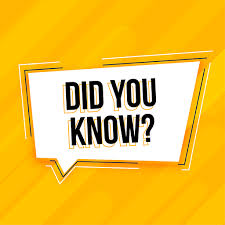
simply amazing, always for you.
In Kenya, the smallest and biggest counties by land area are:

- Smallest County: Mombasa – It is Kenya’s smallest county, with an area of around 229.7 square kilometers. Mombasa is an important coastal city and a major port.
- Biggest County: Turkana – It is the largest county in Kenya by land area, covering approximately 68,680 square kilometers. Located in the northwest of the country, it is known for its arid and semi-arid conditions.
Kenya is divided into 47 counties, each with its unique geographical features, economic activities, and cultural heritage. Among these counties, some are remarkably large, stretching across vast landscapes, while others are more compact, with dense populations or concentrated urban areas. This article explores the smallest and largest counties in Kenya: Mombasa and Turkana.
Mombasa: The Smallest County
Geographical Overview Mombasa, the smallest county in Kenya, is located along the Indian Ocean coast. With an area of approximately 229.7 square kilometers, it stands as the most compact county in terms of land size. Despite its small size, Mombasa plays an outsized role in Kenya’s economy and cultural identity. The county includes Mombasa city, the second-largest city in Kenya after Nairobi, and several surrounding islands like Mombasa Island, which is the heart of the city.
Urbanization and Population Density Mombasa is not only geographically small but also one of the most densely populated counties in the country. Its strategic location as Kenya’s major port makes it a critical hub for trade, commerce, and tourism. Mombasa city, the county capital, has a population of over one million people, contributing significantly to the region’s high population density. The urbanization rate in Mombasa has increased rapidly over the years, with a growing number of people flocking to the coastal city for employment and better living standards.
Economic Significance Despite being small in size, Mombasa’s economic importance cannot be overstated. The port of Mombasa, one of the busiest in East Africa, handles the bulk of Kenya’s international trade. It is a gateway for goods to and from neighboring countries such as Uganda, Rwanda, Burundi, and South Sudan. The county also has a significant tourism industry, thanks to its beautiful beaches, historical sites, and vibrant coastal culture. The tourism sector attracts both local and international visitors who come for the warm climate, rich history, and coastal attractions.
Moreover, Mombasa is known for its thriving industrial sector, which includes manufacturing, shipbuilding, and oil refining. Its infrastructure is well-developed, with a modern highway connecting it to Nairobi, and the Mombasa International Airport serving as a key travel hub. The small geographical size of Mombasa, coupled with its growing population and urban development, demonstrates the county’s high level of economic activity and importance to the national economy.
Turkana: The Largest County
Geographical Overview On the opposite end of the spectrum, Turkana County is the largest county in Kenya by land area. Covering approximately 68,680 square kilometers, it is almost 300 times larger than Mombasa. Situated in the northwestern part of the country, Turkana borders Uganda to the west, South Sudan to the north, and Ethiopia to the northeast. The county’s vast expanse consists mostly of arid and semi-arid land, dominated by dry landscapes, desert terrain, and large savannah areas.
Climate and Landscape The climate of Turkana is harsh, characterized by extreme temperatures and low rainfall. The region is largely arid, with limited rainfall making agriculture challenging. Despite these harsh conditions, the county is home to several significant natural features, including Lake Turkana, which is the world’s largest desert lake. This lake is a vital source of water and livelihood for the local population, supporting fishing and tourism. The county is also home to the vast Turkana Basin, which is rich in fossil sites and provides crucial archaeological insights into early human history.
Population and Livelihood Turkana has a relatively small population compared to its vast size. It is one of the least densely populated counties in Kenya, with most of its residents being members of the Turkana ethnic group. Due to the region’s arid conditions, many residents rely on pastoralism as their primary means of livelihood, herding livestock such as goats, camels, and cattle. Fishing is also a key economic activity, especially around the shores of Lake Turkana.

The county faces several challenges due to its size and geographical location. Access to basic services such as healthcare, education, and infrastructure is limited, particularly in remote areas. The vastness of the land means that many communities are spread out, making it difficult to reach them with essential services. Additionally, the region experiences frequent droughts, which threaten food security and exacerbate poverty.
Despite these challenges, Turkana has immense potential. The county is rich in natural resources, including oil reserves, which have attracted both local and international interest. The oil exploration projects have the potential to transform the county’s economy, providing employment opportunities and infrastructure development.
Cultural and Economic Potential Turkana’s large land area holds significant cultural and economic potential. The county is home to rich cultural traditions, with the Turkana people known for their colorful attire, music, and dance. The vast landscapes also offer opportunities for eco-tourism, with tourists visiting to experience the unique environment, wildlife, and the hospitality of the Turkana people.
In addition to tourism, Turkana’s oil resources, and its proximity to international borders, have led to the development of cross-border trade. The region’s geography positions it as a potential transit point for goods moving between Kenya and neighboring countries such as Uganda, Ethiopia, and South Sudan. As infrastructure improves, Turkana could play an increasingly vital role in Kenya’s economic development.
Conclusion
In conclusion, Mombasa and Turkana represent the extremes of Kenya’s county landscape. Mombasa, though geographically small, is a bustling urban center with a critical economic role, especially in trade and tourism. On the other hand, Turkana’s immense size, harsh environment, and sparse population present both challenges and opportunities, with its vast resources and cultural heritage waiting to be harnessed. These two counties highlight the diverse and complex nature of Kenya’s geography and offer a glimpse into the different ways in which size, location, and resources influence a county’s development and importance.

Support Our Website!
We appreciate your visit and hope you find our content valuable. If you’d like to support us further, please consider contributing through the TILL NUMBER: 9549825. Your support helps us keep delivering great content!
Thank you for your generosity!
